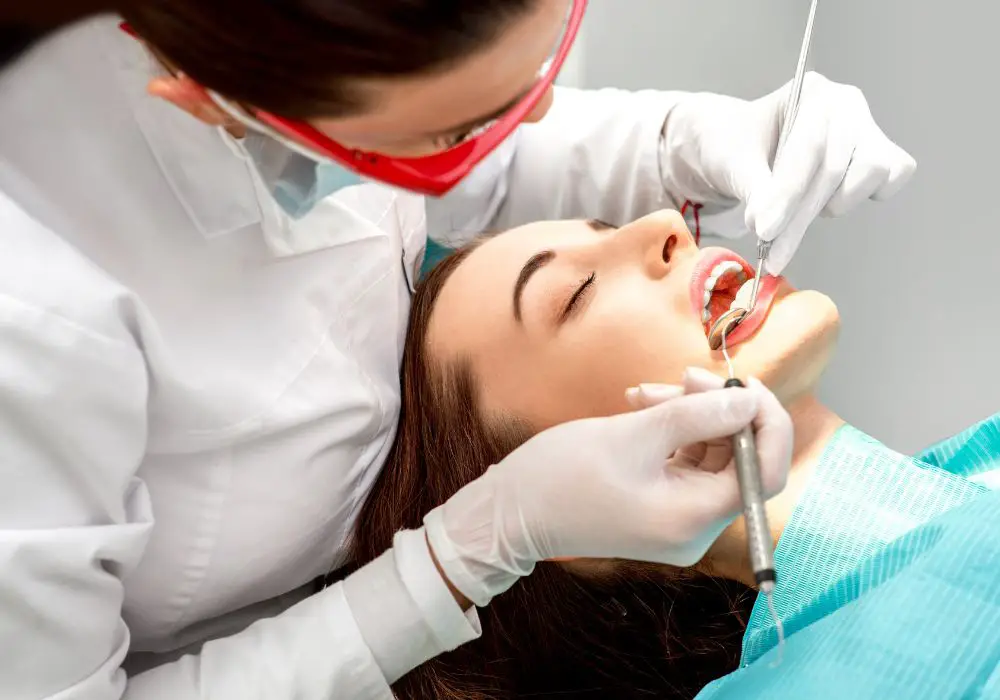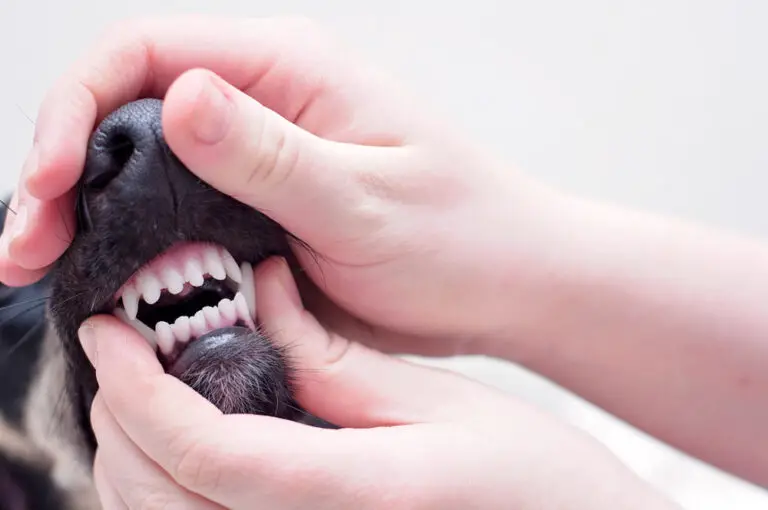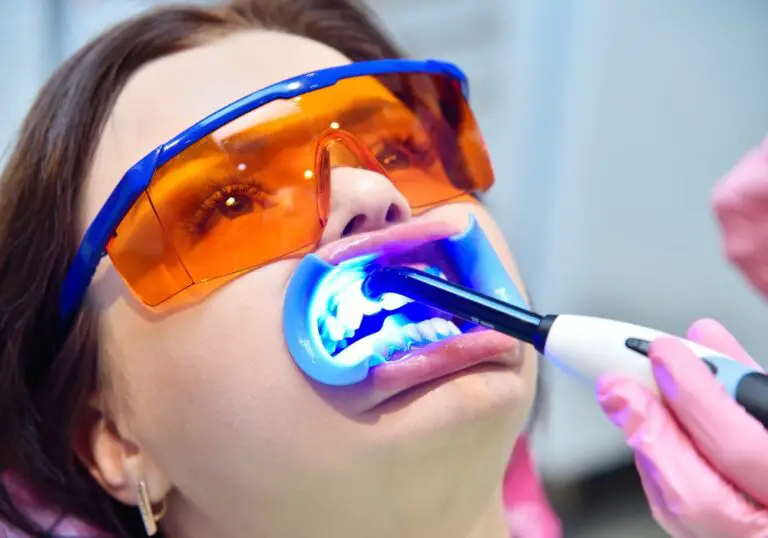Are you self-conscious about the brown stains between your teeth? Do you wonder if your dentist can remove them? The answer is yes, your dentist can remove brown stains between your teeth. Brown stains can be caused by a variety of factors such as smoking, drinking coffee or tea, and poor oral hygiene.
Dental professionals can remove brown stains between your teeth through various procedures such as scaling and polishing. Scaling is a procedure that removes plaque and tartar buildup from your teeth, while polishing smooths the surface of your teeth to remove any remaining stains. Your dentist may also recommend teeth whitening treatments to further enhance the appearance of your teeth.
It’s important to note that while your dentist can remove brown stains between your teeth, prevention is key. Maintaining good oral hygiene habits such as brushing twice a day, flossing regularly, and visiting your dentist for regular cleanings can help prevent brown stains from forming. Additionally, avoiding foods and drinks that can stain your teeth such as coffee, tea, and red wine can also help keep your teeth looking their best.
Understanding Brown Stains Between Teeth
Brown stains between teeth can be a common dental issue that affects many people. These stains can be caused by a variety of factors, including poor oral hygiene, smoking, and consuming certain foods and drinks. In some cases, brown stains can also be a sign of tooth decay or other dental problems.
One of the primary causes of brown stains between teeth is the buildup of plaque. Plaque is a sticky film that forms on teeth when bacteria in the mouth mix with saliva and food particles. If left untreated, plaque can harden into tartar, which can cause brown stains to form on the teeth.
Smoking and using other tobacco products can also cause brown stains between teeth. Nicotine and other chemicals in tobacco can cause teeth to become discolored and stained over time. In addition, consuming dark-colored foods and drinks, such as coffee, tea, and red wine, can also cause brown stains to form on the teeth.
Tooth decay can also cause brown stains between teeth. When decay occurs, it can cause the enamel on the teeth to break down, which can lead to the formation of brown spots. If left untreated, tooth decay can also cause cavities and other dental problems.
If you are experiencing brown stains between your teeth, it is important to see a dentist for an evaluation. Your dentist can determine the underlying cause of the stains and recommend the appropriate treatment. This may include professional teeth cleaning, teeth whitening, or other dental procedures to restore your smile.
Role of Dentists in Stain Removal

If you have brown stains between your teeth, you may be wondering if a dentist can help remove them. The good news is that dentists can play a significant role in removing stains from your teeth, including those between your teeth.
Here are some ways dentists can help remove brown stains between your teeth:
- Professional cleaning: Dentists can perform professional cleaning to remove plaque and tartar buildup, which can cause brown stains between your teeth. During the cleaning, the dentist will use special tools to scrape away the buildup and polish your teeth to remove surface stains.
- Teeth whitening: If the brown stains are caused by surface discoloration, your dentist may recommend teeth whitening. There are several teeth whitening options available, including in-office treatments and take-home kits.
- Bonding and veneers: If the brown stains are severe or cannot be removed by cleaning or whitening, your dentist may recommend bonding or veneers. Bonding involves applying a tooth-colored resin to the affected teeth, while veneers are thin shells that are placed over the teeth to improve their appearance.
It’s important to note that the best treatment for brown stains between your teeth will depend on the cause of the stains and the severity of the discoloration. Your dentist can help determine the best course of treatment for your specific needs.
In addition to removing brown stains between your teeth, dentists can also provide tips and recommendations for preventing future staining. For example, they may recommend avoiding certain foods and beverages that can cause staining, such as coffee, tea, and red wine. They may also recommend brushing and flossing regularly and using an antibacterial mouthwash to keep your teeth and gums healthy.
Overall, dentists can play a crucial role in removing brown stains between your teeth and helping you maintain a healthy, beautiful smile. If you’re concerned about brown stains between your teeth, schedule an appointment with your dentist to discuss your treatment options.
Dental Procedures for Stain Removal

If you have brown stains between your teeth, there are several dental procedures that can help you get rid of them. Here are some of the most common procedures used by dentists to remove stains:
Teeth Cleaning
Teeth cleaning is the most basic procedure for removing stains. During a teeth cleaning, your dentist will use special tools to remove plaque and tartar from your teeth. This can help to remove surface stains and prevent them from getting worse. If you have brown stains between your teeth, teeth cleaning may be enough to remove them.
Teeth Whitening
Teeth whitening is a more advanced procedure that can help to remove deeper stains. There are several different types of teeth whitening, including in-office treatments and at-home treatments. In-office treatments are more expensive but can provide faster and more dramatic results. At-home treatments are less expensive but may take longer to see results. Your dentist can help you decide which type of teeth whitening is best for you.
Dental Veneers
Dental veneers are a more permanent solution for removing stains. Veneers are thin shells that are placed over the front of your teeth to cover up stains and other imperfections. Veneers are custom-made to fit your teeth and can be made to match the color of your natural teeth. While veneers are more expensive than teeth cleaning or whitening, they can provide a long-lasting solution for removing stains.
In summary, there are several dental procedures that can help you remove brown stains between your teeth. Teeth cleaning is the most basic procedure and can help to remove surface stains. Teeth whitening is a more advanced procedure that can help to remove deeper stains. Dental veneers are a more permanent solution for removing stains and can provide a long-lasting solution. Your dentist can help you decide which procedure is best for you based on your individual needs and budget.
Home Care Tips to Prevent Stains
If you want to prevent brown stains from appearing between your teeth, there are a few things you can do at home. Here are some tips:
Proper Brushing Techniques
Brush your teeth for at least two minutes, twice a day. Use a toothbrush with soft bristles and fluoride toothpaste. Brush gently in circular motions and make sure to reach all surfaces of your teeth, including the back molars and the gumline. Don’t forget to brush your tongue as well, as it can harbor bacteria that can cause bad breath.
Flossing Regularly
Flossing is important to remove food particles and plaque from between your teeth that your toothbrush can’t reach. Make sure to floss at least once a day and use a gentle back-and-forth motion. Be careful not to snap the floss into your gums, as this can cause bleeding and damage.
Healthy Diet
What you eat and drink can affect the health of your teeth. Try to avoid sugary and acidic foods and drinks, such as candy, soda, and citrus fruits. These can erode tooth enamel and make your teeth more susceptible to staining. Instead, choose foods that are high in calcium and vitamin D, such as milk, cheese, and leafy greens. These can help strengthen your teeth and prevent decay.
By following these home care tips, you can keep your teeth healthy and prevent brown stains from appearing between them. Remember to visit your dentist regularly for cleanings and checkups, as they can help identify and treat any dental issues before they become more serious.
Importance of Regular Dental Check-ups

Regular dental check-ups are essential for maintaining healthy teeth and gums. Dental check-ups help to ensure that any dental issues are caught early and treated before they become more severe and costly to fix.
During a dental check-up, your dentist will examine your teeth and gums, looking for any signs of decay, gum disease, or other dental problems. They will also clean your teeth and remove any plaque or tartar buildup that may have accumulated since your last visit.
Preventive dental check-ups can help catch teeth issues early. In some cases, symptoms of gingivitis, tooth decay, and other conditions can be mild enough to go unnoticed. Regular preventive dental check-ups help make sure issues are caught and treated as early as possible.
Your dentist may also take x-rays of your teeth to check for any hidden cavities or other dental problems that may not be visible during a visual exam. Early detection of dental problems can help prevent more serious dental issues from developing in the future.
In addition to detecting dental problems, regular dental check-ups are also an opportunity for your dentist to provide you with advice on how to maintain good oral hygiene and prevent future dental problems. Your dentist can recommend the best products for your dental needs, including toothpaste, mouthwash, and dental floss.
Overall, regular dental check-ups are essential for maintaining good oral health. They help to prevent dental problems from developing and ensure that any issues are caught and treated early. By attending regular dental check-ups, you can help to ensure that your teeth and gums remain healthy and strong for years to come.
Frequently Asked Questions
What causes brown stains to form between teeth?
Brown stains between teeth can be caused by a variety of factors such as smoking, poor oral hygiene, certain medications, and consuming dark-colored foods and beverages. Plaque buildup can also cause brown stains to form between teeth.
How can dentists remove brown stains from teeth?
Dentists can remove brown stains from teeth by using a variety of methods such as professional teeth cleaning, teeth whitening, and dental bonding. In some cases, they may also recommend veneers or crowns to cover up deep stains.
Is it possible to remove brown stains from teeth naturally?
While there are some natural remedies that can help remove surface stains, such as brushing with baking soda or using hydrogen peroxide, deep brown stains between teeth may require professional treatment.
Can brown stains on teeth be prevented?
Yes, brown stains on teeth can be prevented by maintaining good oral hygiene habits such as brushing twice a day, flossing daily, and visiting the dentist regularly for professional cleanings. Avoiding smoking and limiting consumption of dark-colored foods and beverages can also help prevent brown stains from forming.
What are the best ways to remove deep brown stains from teeth?
The best way to remove deep brown stains from teeth is to visit a dentist for professional treatment. They may recommend a combination of teeth whitening, bonding, and other cosmetic procedures to help remove the stains.
Are there any dental procedures that can fix brown spots on teeth?
Yes, there are several dental procedures that can fix brown spots on teeth such as teeth whitening, dental bonding, veneers, and crowns. The best treatment option will depend on the severity and location of the brown spots.







